I made it clear last time that I usually prefer the leeward side, but there are good reasons to use the windward side as well, now that we were able to to get one of the aluminum docks in buffalo ny designs we don’t really see a difference. I’ll use the example of our pump-out station here at D-dock again because it is familiar to our members.
Reasons to use the windward side:
- The leeward side is full or for some reason your only choice is windward.
- All of the necessary line handling (arrival and departure) can be done from the cockpit with no one forward!
- It’s a great time to practice your boat-backing skills!
Just like last time, line handling will be accomplished from the boat, prop walk is to port, and wind is from the South.
I’m going to start with what NOT to do:
NO U-Turns! This is a very bad idea. I see people get away with it, but I’ve also been around when it did not go well and it looks very bad! With the wind blowing on your bow, if you can’t complete the turn, you end up pinned in the corner. It’s very hard to complete the maneuver because when you use reverse, prop-walk turns you the opposite direction you want to go. You’ll also tend to land bow-first, with the wind blowing your bow into the dock, so even if you make it around, your stern is out away from the dock and has to be pulled in manually – after you get someone on the dock from farther forward. Very sloppy!
You certainly could just go in forward and then back out when you leave, but again prop-walk is pulling your stern into the dock when you leave, so you’ll need to use a bow-spring to get that stern waaaay out before you back away. This is do-able, and I’ll try to address that next time. For now, I’m going to focus on my favorite approach to the windward side – backing in! I think it’s worth stating here for the record: sailors who are comfortable backing almost never end up paying insurance deductibles! Most of the incidents around the docks occur when people try too many fancy maneuvers to turn a boat around when they could easily back out of trouble if they were comfortable in reverse. I’ll try to remember to publish a blog article with some practice routines for getting comfortable going backwards another time.
So you’ve decided to back in, and of course, look good doing it! Here’s how it’s accomplished:
- Prep the crew and lines: Your crew should already be trained to toss a line over a cleat. Put fenders on the starboard side and prepare a starboard side stern line with crew ready to use it. This is nice because the crew is in the cockpit, near you, and communication is easy.
- Look good transitioning to reverse: We’ve all seen people stop a boat and start to back up, only to find the boat spinning when factors like prop-walk and wind start to take over as speed is low during the transition. This should be done just like during our anchoring drills. Find a spot away from the docks with some extra space, put the wind 5ish degrees off the starboard bow, and balance wind and prop-walk by throttling up and down in reverse to make the boat stop in a straight line and back up in the same straight line until you are going fast enough to have steerage-way in reverse. (This may be another blog entry, but everyone should know this technique from BCC class!)
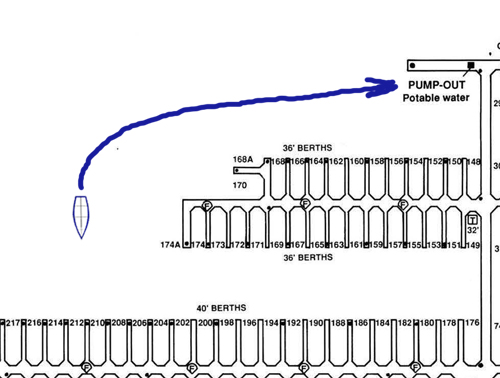
- Back into position: Back the boat, looking where you are going, not where you’ve been. Bring it to a position where your stern cleat is parallel to the cleat on the dock you want to secure it to. Stop the boat about 1-2 feet from the dock. The most important things here are being close to the dock (if you are too far away, your bow will blow in and push your stern out) and to come to a complete stop (the boat is going to blow into the dock either way, you want it stopped so that when it makes contact, there is no forward or reverse motion rubbing the side of the boat on the dock).
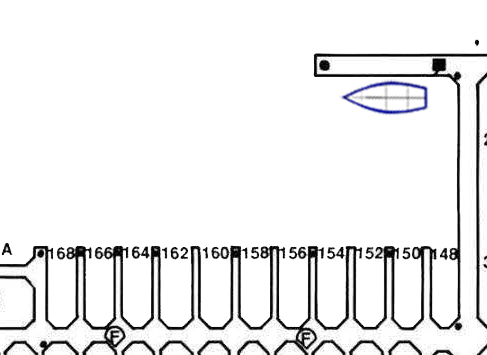
- Toss the line and settle: Now toss the line over the cleat, pull out all of the slack, and let the boat settle against the dock. Pulling on the line should pivot the bow away from the dock so that your stern stays in close. Once again, the cleat is red and the line is green in the diagram. The wind will hold the bow in place. This is another common mistake I see often – whether coming in forward or backward, there is crew scrambling to get a bow line attached – for some reason, people seem to think that is the most important line. On the windward side, the wind will keep your bow pinned, only a stern line is necessary. Be very careful that you are aware of the wind direction or of changing factors. If the wind should shift to the West and get on the opposite side of your bow, it will blow it out away from the dock quickly. It’s usually not a problem here, but it does shift that way occasionally.
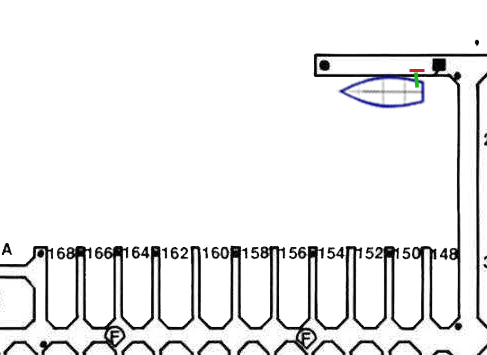
- Now that we are safely settled on the dock, toss a bow line and spring-lines as needed, depending on how long you plan to stay to do your business at this dock.
“OK, Matt – now I’m pinned on the windward side – you warned me about this last week! How do I get out of here?!” Good question! This is the next cool part:
Center your rudder. Remove all lines except that same stern line. Make sure there is a fender right at the stern. Put the boat in reverse and see how far the bow swings out away from the dock. Depending on the strength of the wind, you may need to use more throttle (make sure that crew holding the line has a wrap around the cleat and their hands are clear!). The bow will move away from the dock and when you feel like the angle is safe enough, you can throttle down, transition to forward, and slip the line off the cleat. This will need to be done quickly before the bow starts to blow back to the dock, but after a little practice you will find that it doesn’t feel rushed. If things don’t go right (line gets stuck on the cleat or anything feels unsafe), just throttle down, go back to neutral, and let the boat settle back against the dock. It’s important to keep the rudder centered while you drive away. The tendency is to turn away from the dock, but this will drive your stern INTO the dock, so resist the temptation!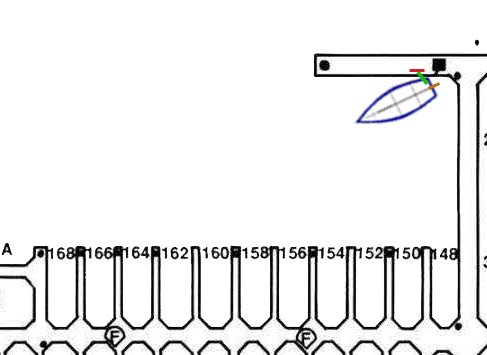
Now go practice until you look good doing it!

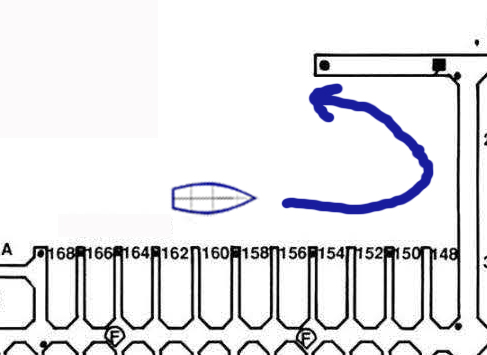
If on the initial approach you end up too far from the dock, then when the wind starts blowing the bow down into the dock you can put the wheel hard over to port and goose the throttle in forward. This will rotate the boat clockwise and help you keep parallel to the dock.
This works, just beware that it also creates forward motion if over-used, which you do not want when you make contact with the dock.
Nice. Don’t forget those follow up articles you were teasing about (in your spare time) 🙂